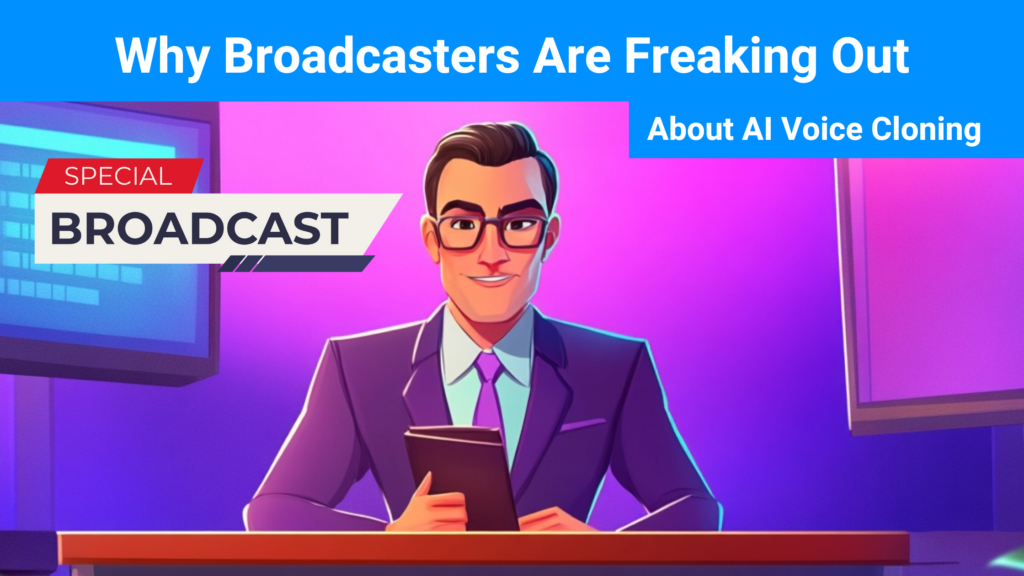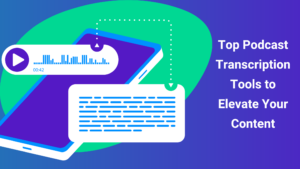Have you heard? Broadcasters are kind of freaking out about AI voice cloning – but not for the reasons you might think. While concerns about misuse like unauthorized voice replication or deepfakes dominate headlines, there’s another, more exciting side to the story. Broadcasters are “freaking out” in the BEST way possible about the possibilities this technology brings, from expanding accessibility to maintaining brand consistency and scaling content creation.
Let’s explore why AI voice cloning is more than just a disruption – it’s a game-changer for broadcasting.
The Basics of AI Voice Cloning in Broadcasting
AI voice cloning uses deep learning algorithms to replicate a person’s unique vocal characteristics, including tone, inflection, and cadence. For broadcasters, this means being able to “clone” the voice of a trusted host or narrator, allowing them to create more content without additional recording time.
But this isn’t just about saving time – it’s about enhancing storytelling, improving accessibility, and reaching broader audiences.
1. Ethical Practices and Consent Are Paramount
One of the biggest concerns about AI voice cloning is ethical misuse. Broadcasters, however, are embracing platforms that require explicit consent before cloning a voice. This commitment ensures that no voice is cloned without the owner’s permission, establishing a standard of trust and transparency.
Podcraftr exemplifies this approach by ensuring that the voices used in its podcasts reflect the vision and creative direction of its users. The platform prioritizes ethical use, allowing publishers and broadcasters to maintain control and confidence over their audio content.
2. Expanding Multilingual Accessibility
For broadcasters, reaching a global audience has always been challenging. AI voice cloning offers a groundbreaking solution: multilingual accessibility. By cloning a voice and pairing it with AI translation tools, broadcasters can deliver content in multiple languages – all while maintaining the familiarity of the original voice.
3. Maintaining Brand Consistency
In the broadcasting world, voice is a key part of a brand’s identity. Whether it’s the voice of a morning show host or a signature announcer, audiences associate certain tones and inflections with reliability, professionalism, or even humor.
AI voice cloning ensures that brands can maintain that consistency across platforms, programs, and even formats. For example, a cloned voice can be used for podcast intros, ad spots, or newscasts, ensuring a cohesive experience for audiences without requiring a person to record each piece of content manually.
4. Revolutionizing Content Creation
Broadcasters are “freaking out” about AI voice cloning because it opens up entirely new possibilities for content creation. Instead of being limited by the availability of a voice talent, broadcasters can generate high-quality audio on demand, filling in for last-minute changes or creating additional episodes without needing to schedule extra studio time.
This flexibility is especially valuable for live updates, breaking news, or seasonal programming. AI voice cloning allows broadcasters to produce timely, relevant content while keeping their processes efficient.
5. Enhancing Accessibility and Reach
Another vital aspect of AI in newsroom technology is its role in improving accessibility. By converting written content into audio formats, AI ensures that news is accessible to a broader audience, including those with visual impairments or learning disabilities.
Podcraftr takes this a step further. The platform empowers publishers and broadcasters to instantly turn human-created articles and stories into studio-quality podcasts, ensuring they reach untapped audiences.
Podcraftr recognizes that the best stories and articles are still written by humans—but far too many don’t receive the reach they deserve. By making it easy to produce podcasts, Podcraftr enables publishers to amplify their content and connect with entirely new listener bases.
The Future of Broadcasting with AI Voice Cloning
AI voice cloning offers endless opportunities for broadcasters, from improving accessibility to maintaining brand consistency and scaling content creation. Ethical practices, consent, and human oversight remain critical to ensuring the technology is used responsibly and effectively.
With platforms like Podcraftr leading the charge, broadcasters have the tools to keep the human element central while exploring the transformative potential of AI. As AI continues to evolve, it’s clear that the future of broadcasting is not just about creating more content—it’s about creating better connections.
Ready to amplify your stories? Podcraftr is here to help. Try it today and experience how AI voice cloning can transform your content into engaging audio that reaches new audiences effortlessly.




